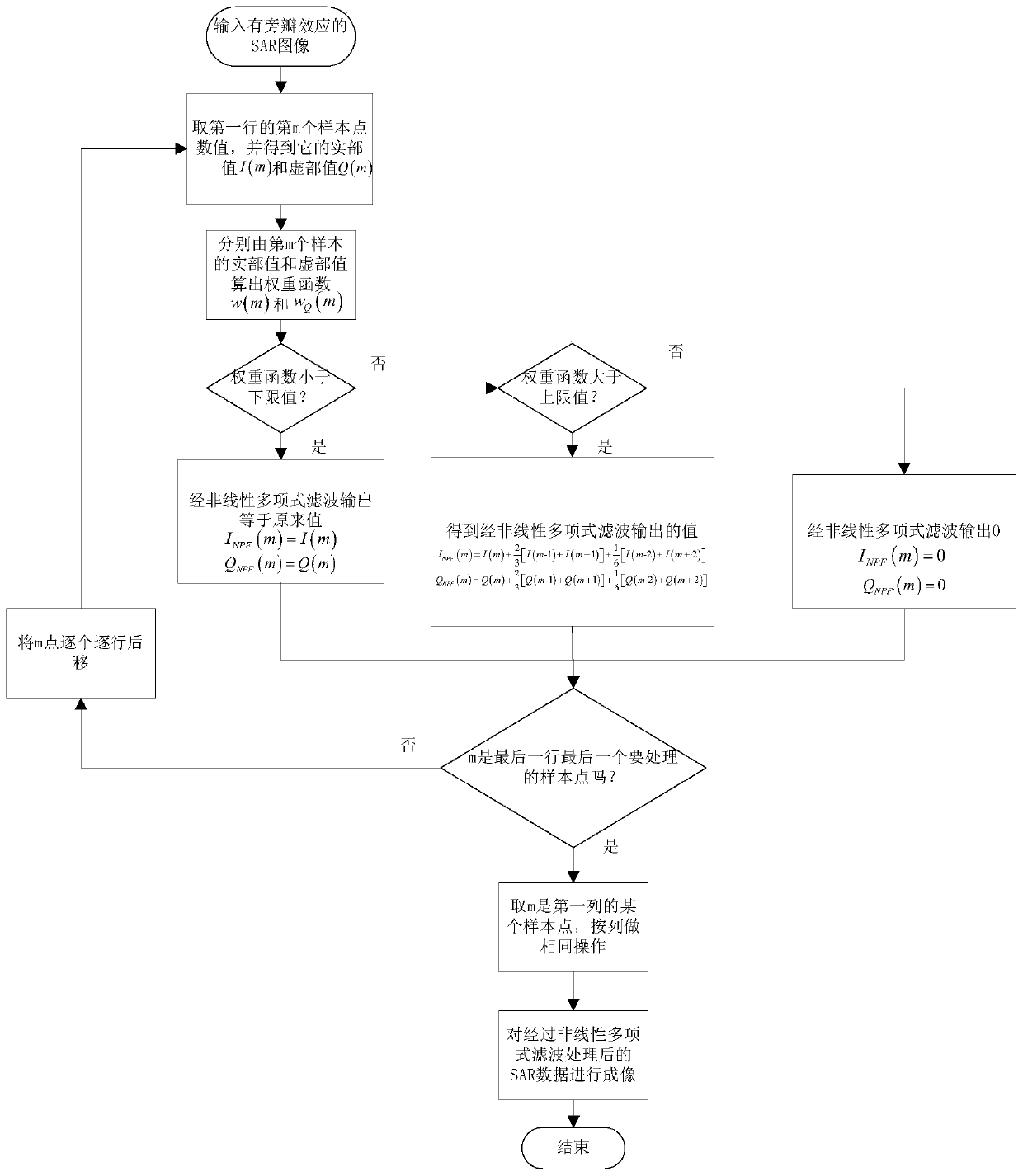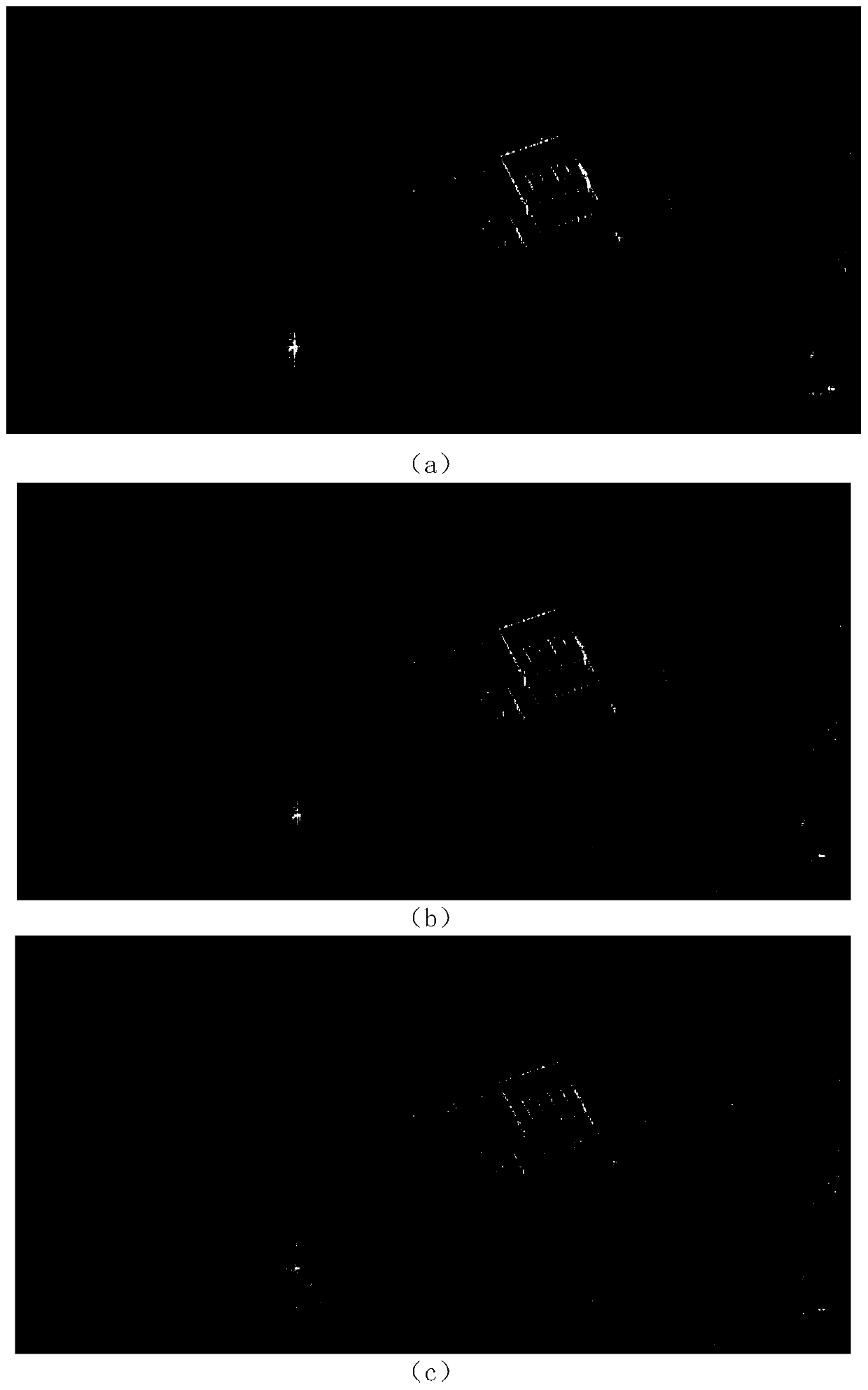SAR Image Sidelobe Suppression Method Based on Nonlinear Polynomial Filtering
A side lobe suppression, polynomial technology, applied in image enhancement, image analysis, image data processing and other directions, can solve the problem that the noise or non-systematic error of SAR image cannot be reduced, the luminous cross of SAR image cannot be effectively reduced, and the image quality is not effective. It can improve the quality of SAR images, improve the side lobe effect, and reduce noise and non-systematic errors.
- Summary
- Abstract
- Description
- Claims
- Application Information
AI Technical Summary
Problems solved by technology
Method used
Image
Examples
Embodiment 1
[0031] In the existing nonlinear sidelobe suppression technology, the SVA algorithm is not good enough for sidelobe suppression in the case of multiple sinc functions, the resolution of the SAR image processed by the SVA algorithm is reduced, and the existing noise and non-systematic errors of the SAR image cannot be weakened. . Aiming at this current situation, the present invention proposes a kind of high-resolution SAR image side lobe suppression method based on nonlinear polynomial filtering through research and experiment, see figure 1 . The side lobe suppression method that the present invention is used for SAR image also can be referred to as the concrete process step of second-order NPF algorithm as follows:
[0032] (1) Input the SAR image to be processed: input a high-resolution SAR image with side lobe effect, and obtain a two-dimensional matrix with N rows and M columns. It can be seen that the number of points in the azimuth direction of the SAR image is M, and t...
Embodiment 2
[0051] The method for sidelobe suppression of high-resolution SAR images based on nonlinear polynomial filtering is the same as in embodiment 1. In order to obtain the best effect, according to the simulation experiment results, the upper and lower limits of the SVA algorithm in the prior art have been modified. The steps of the present invention The upper bound χ of the weight function described in (4) max =0.96, the lower limit of the weight function χ min =-1.23.
[0052] The present invention reduces the lower limit of the weight function on the basis of the SVA algorithm, thereby reducing the width of the main lobe, and solves the problem that the image resolution of the SAR image is reduced after being processed by the SVA algorithm; increases the upper limit of the weight function, effectively weakening the The noise and non-systematic errors of SAR images are eliminated.
Embodiment 3
[0054] The method of high-resolution SAR image side lobe suppression based on nonlinear polynomial filtering is the same as embodiment 1-2, and the mth sample point described in step (5) and step (7) is implemented after the nonlinear polynomial filter The output value of the part I NPF (m) and the output value Q of the imaginary part NPF In the calculation formula of (m), in order to best suppress the side lobe effect of the SAR image, it has been verified by simulation experiments that
[0055] The present invention involves more adjacent sample points and widens the range of influence of adjacent sample points. The output value of the second-order NPF algorithm adopted is the sum of the product of the sample point and four adjacent sample points and their weight coefficients. Compared with the SVA algorithm, it suppresses the side lobe effect better.
[0056] A comprehensive example is given below to further describe the present invention in detail.
PUM
 Login to View More
Login to View More Abstract
Description
Claims
Application Information
 Login to View More
Login to View More - R&D
- Intellectual Property
- Life Sciences
- Materials
- Tech Scout
- Unparalleled Data Quality
- Higher Quality Content
- 60% Fewer Hallucinations
Browse by: Latest US Patents, China's latest patents, Technical Efficacy Thesaurus, Application Domain, Technology Topic, Popular Technical Reports.
© 2025 PatSnap. All rights reserved.Legal|Privacy policy|Modern Slavery Act Transparency Statement|Sitemap|About US| Contact US: help@patsnap.com



